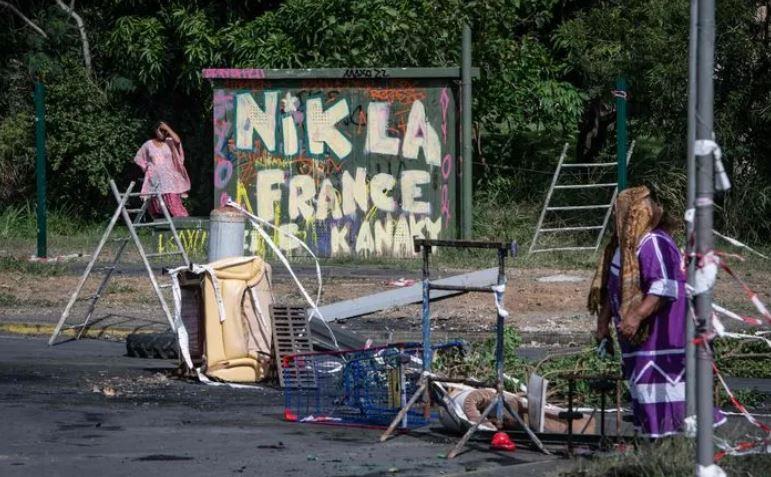from Pikara Magazine.
The participation of women in anarchist print culture on an international scale was essential for the extraordinary dissemination of the libertarian movement’s press and editorial production from the end of the 19th century to the beginning of the 20th. These were women who challenged class and gender norms, who created editorial projects and collections, edited newspapers and pamphlets, and translated political and literary texts. Their participation can be traced on the front pages and covers, but also in the workshops and printing presses, and on the streets, distributing publications or collecting subscriptions. This is the message of the exhibition Shapers of the Idea: Women in anarchist print culture, which, in the own words of its curators, “recovers that often-invisible intellectual and manual work, in order to commemorate and honour all those who brought the ideas of revolution, emancipation, fraternity and equality to typeface, and who imagined a world absolutely different from the one they knew”.
Lucia Campanella, María Migueláñez and Jordi Maíz are the curators of this exhibition, which accompanies the conference “Editors and translators beyond borders: women in anarchist transnational printed culture (1890-1939)”, held at the Carlos III University of Madrid. The exhibition is hosted by the Madrid headquarters of the Anselmo Lorenzo Foundation, the CNT’s documentary center.
The exhibition catalogue contextualises the historical moments these women lived through, the obstacles they encountered on their paths, the enormous work behind the dissemination of libertarian ideas, the transnational support networks and, ultimately, how women have always been there, pushing against the limits of patriarchy and capitalism in their time.
The exhibition shows how anarchists throughout the globe launched newspapers run exclusively by women, such as La Nueva Senda (“The New Pathway”, 1909-1910), published in Montevideo and promoted by Juana Rouco Buela, later joined by Fidela Cuñado, Terencia Fernández and María Fernández; Nuestra Tribuna. Quincenario femenino de ideas, arte, crítica y literatura (“Our Tribune. A women’s fortnightly of ideas, art, criticism and literature”, 1922-1925), edited in Buenos Aires by Virginia Bolten; or La Voz de la Mujer (“The Woman’s Voice”, 1896-1897), also published in Buenos Aires, whose editors were Pepita Gherra, Josefa Martínez, Josefa Calvo and Luisa Violeta, and where one could read the slogan “No gods, no masters, no husbands.”
In Spain, the Valencian newspapers Humanidad Libre (“Free Humanity”, 1902) and Mujeres Libres (“Free Women”, 1936 -1939) are examples of such publications. The latter paper published internationally well-known writers such as Emma Goldman or Etta Federn. As stated in the catalogue, the purpose of the anarchist publishing explosion was “to fill the libraries of individuals and groups with topics that were unusual for the generalist publishing world. In all genres and formats, always accessible to the pockets of the most humble, anti-militarist, anticlerical, naturalistic and sociological issues were the best-liked, as well as the defence of women’s rights”.
But was it necessary to create a women’s newspaper? Laura Fernández Cordero asks this question in her catalogue article, “Anarchist [female] Editors”, to which she responds that it was needed precisely because of “the obstacles presented by the [male] comrades themselves, sometimes convinced of the theory of the emancipation of women and free love, but less willing to accept its practical consequences”. And despite the International Workers’ Association’s having approved a declaration of gender equality and equal admission in workers’ associations, the path from theory to practice was more difficult. Campanella points out that these women faced gender roles in very different ways, “there are those who renounced life in a heterosexual couple and motherhood and family, but they were not the majority”.
Rescuing the compañera from anonymity
Lucia Campanella says that each of these women implemented different strategies to break with gender roles, although “in many cases, the family and the couple, perhaps paradoxically, were central places for the development of anarchist ideas. Some women gave speeches at rallies in an advanced state of pregnancy, or sheltered fugitives and persecuted publications in their homes, or stole money from their jobs to pay the costs of clandestine printing presses”. The truth is that many female partners of prominent militants have not gone down in history with equal prominence, although that would reflect their own militancy, which was of equal importance to that of their male companions.

As Ignacio C. Soriano points out in his article for the catalogue, “It is not easy to determine the degree of involvement of the female comrades in the editorial work, since many of them maintain anonymity and their name does not usually appear when the credits are given”. This is what requires such complex and meticulous work from the researchers who trace the lives of the women who participated in libertarian printed culture. Says Campanella: “Being a partner of a prominent militant often meant joint militancy, which enhanced the scope of the political actions of both partners. This, however, often condemned women to invisibility in state records, in police reports and in anarchist historiography itself. Rescuing them from anonymity is a patient and laborious task, which has been carried out for a short time, and from which more fruits can be expected in the future.”
Stimulating anarchist debates
The transnational networks of the libertarian movement made it a multilingual community, making it easier for “many anarchist women to put their knowledge of other languages at the service of spreading the Idea through translations”. Voltairine de Cleyre (1866-1912) translated literature into English from French and Yiddish; Teresa Mañé (1865-1939)—also known by her pseudonym, Soledad Gustavo—was a prolific translator of political and literary texts for La Revista Blanca, a newspaper that she promoted together with her partner Joan Montseny; the Russian Marie Goldsmith (1871-1933) translated texts by Kropotkin and Néstor Makhno into French; and the Italian-Uruguayan Luce Fabbri (1908-2000) translated Reclus into Italian and Dante into Spanish. These are only a few translators who, in different languages, brought the debates about the ideals of emancipation to thousands of homes on the planet.
Of equal importance was the work of the editors and printers who manufactured the books, pamphlets, newspapers and brochures that were then read by thousands of people. There are figures such as Isabel Pereyra Dagedo, who launched the collections of pamphlets Alas, Los Nuestros and Prometeo; the legendary Carmen Paredes, who together with her companion Hermoso Plaja, launched, in the words of Civantos Urrutia, “the richest and most diversified publishing work of Spanish anarchism”, the Acracia Library; or the ironer from Córdoba Rafaela Salazar López, who promoted the editorial and training project of the Recreational Library of Sociological Propaganda. Of course, all these women deserve their own article, which describes the intensity of their lives and their political and social work, which was so important in their time and whose wake was a boost for our current context.
Intellectual and manual work
The exhibition combines pieces that reflect the intellectual work of the best-known anarchist women along with the work of women who carried out manual work considered secondary, but without which the editorial wheel could never have turned: typists, composers, proofreaders, transcribers, packagers, messengers, typographers, packagers, subscription collectors, among others. Luca Campanella points out that “it is not a surprise that women have often carried out these subordinate tasks. The distinction between manual and intellectual tasks has served to disparage work without which anarchist ideas could not have circulated as they did. This is about dismantling those dichotomies where the author (generally, but not always, a man) and his text are what is valuable, and everything else, what makes its circulation among the public viable, is dispensable and less valuable.
The exhibition presents archival pieces from the documentary collection of the Anselmo Lorenzo Foundation (FAL). The curators faced various challenges since it was important for the exhibition to include some of the themes and figures discussed at the aforementioned congress, although the materials in the FAL collection did not always make that possible. Therefore, they used other resources and archives for the exhibition. “We can say that it was a joint effort, of which we are proud, and that in no way could we have done without the foundation and its members,” Campanella concludes.
The exhibition closes today, but its catalog is available online. Its cover, reminiscent of the pamphlets edited by these women, reads: “if I can’t write, if I can’t translate, if I can’t edit, if I can’t participate in printed culture—it’s not my revolution”. As one of the curators says, “We must continue rethinking their life stories, showing their extraordinary commitment, something that contributes so much at the current moment”.
~ Araceli Pulpillo








